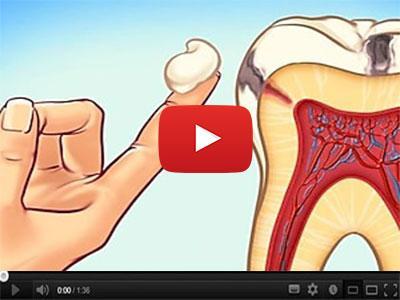
It may sound odd but it is scientifically proven...
According to a Harvard scientist, swallowing these newly discovered bacteria is all you need to do to fix all your dental issues, from gum bleeding and teeth rotting to bad breath and cavities.
These amazingly efficient bacteria work by reconstructing your enamel (the outer layer of your teeth)...
Making them 20x stronger than a normal tooth...
Like a titanium shield against cavities, root infection and enamel erosion.
Some say their teeth are now stronger than a dental implant...
Click here to find out how easy it is to get these bacteria and start your teeth reconstruction today.

According to a Harvard scientist, swallowing these newly discovered bacteria is all you need to do to fix all your dental issues, from gum bleeding and teeth rotting to bad breath and cavities.
These amazingly efficient bacteria work by reconstructing your enamel (the outer layer of your teeth)...
Making them 20x stronger than a normal tooth...
Like a titanium shield against cavities, root infection and enamel erosion.
Some say their teeth are now stronger than a dental implant...
Click here to find out how easy it is to get these bacteria and start your teeth reconstruction today.


olecular dating studies suggests a Cretaceous evolutionary radiation, while fossil evidence points to a Cenozoic radiation (the so-called 'rocks' versus 'clocks' controversy). The discovery in 2005 of Vegavis from the Maastrichtian, the last stage of the Late Cretaceous, proved that the diversification of modern birds started before the Cenozoic era. The affinities of an earlier fossil, the possible galliform Austinornis lentus, dated to about 85 million years ago, are still too controversial to provide a fossil evidence of modern bird diversification. In 2020, Asteriornis from the Maastrichtian was described, it appears to be a close relative of Galloanserae, the earliest diverging lineage within Neognathae. Attempts to reconcile molecular and fossil evidence using genomic-scale DNA data and comprehensive fossil information have not resolved the controversy. However, a 2015 estimate that used a new method for calibrating molecular clocks confirmed that while modern birds originated early in the Late Cretaceous, likely in Western Gondwana, a pulse of diversification in all major groups occurred around the Cretaceous–Palaeogene extinction event. Modern birds would have expanded from West Gondwana through two routes. One route was an Antarctic interchange in the Paleogene. The other route was probably via Paleocene land bridges between South America and North America, which allowed for the rapid expansion and diversification of Neornithes into the Holarctic and Paleotropics. On the other han
